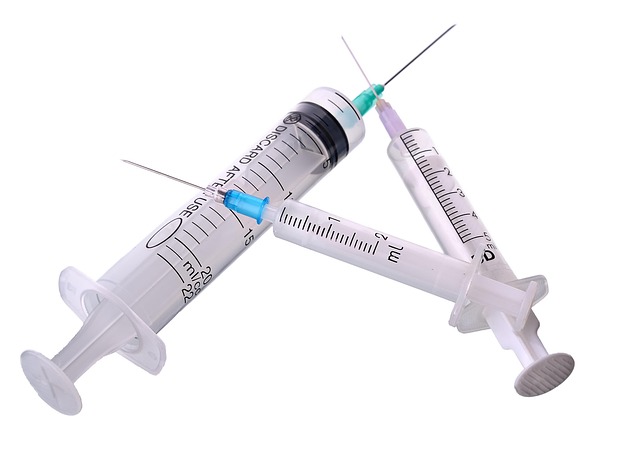Semaglutide, a GLP-1 receptor agonist, offers significant benefits in type 2 diabetes management, including cardiovascular and renal health. Optimizing its dosing involves considering patient factors like age, weight, kidney function, and existing medications to balance glycemic control with minimal gastrointestinal adverse reactions. A strategic, stepwise approach is recommended: starting with a low dose (0.25 mg weekly) and gradually escalating based on responses and side effects. Regular monitoring, including tracking weight loss, blood glucose levels, and adverse effects, is crucial for personalizing dosing and ensuring patient safety. Healthcare providers must tailor dosages for diverse patient populations, considering conditions like gastrointestinal disorders, renal impairment, and cardiovascular disease.
“Optimizing patient outcomes with semaglutide requires a nuanced understanding of its dosage. This comprehensive guide offers healthcare providers essential insights into managing semaglutide therapy. From unravelling the therapeutic benefits of semaglutide to navigating specific patient populations, we explore key factors influencing dosing. Learn effective initial strategies, adjust dosages based on response, manage side effects, and ensure ongoing monitoring. Master these aspects of semaglutide dosing for improved clinical outcomes.”
Understanding Semaglutide and Its Therapeutic Role

Semaglutide is a novel glucagon-like peptide-1 (GLP-1) receptor agonist, primarily used in the management of type 2 diabetes. Its therapeutic role extends beyond blood glucose control as it offers potential cardiovascular and renal benefits. The medication mimics the natural hormone GLP-1, which stimulates insulin secretion in a glucose-dependent manner and inhibits glucagon release, leading to reduced hepatic glucose production.
Understanding semaglutide’s mechanism of action is crucial for healthcare providers when determining appropriate dosing. Dosage should be individualized based on patient factors such as age, body weight, kidney function, and existing diabetes medication regimens. Optimizing semaglutide dosing aims to balance its effects on glycemic control while minimizing adverse reactions, particularly gastrointestinal symptoms like nausea and vomiting, which are common with GLP-1 receptor agonists.
Factors Influencing Semaglutide Dosage

Several factors play a crucial role in determining the optimal semaglutide dosage for an individual patient. These include their current blood glucose levels, HbA1c (a marker of long-term blood sugar control), age, weight, and any concomitant medications they might be taking. For instance, patients with higher HbA1c levels may require a higher initial dose to achieve meaningful glycemic control. Similarly, certain medications can interact with semaglutide, influencing its effectiveness and requiring adjustments in dosing.
Additionally, healthcare providers should consider the patient’s overall health status and any history of adverse reactions to similar medications. Patient preference and adherence also matter; dosages should be tailored to ensure patients can comfortably manage their treatment while adhering to the prescribed regimen for maximum therapeutic benefits.
Initial Dosing Strategy for Semaglutide

The initial dosing strategy for semaglutide involves a careful and tailored approach to ensure optimal efficacy and patient safety. Typically, healthcare providers start with a low dose, gradually increasing it over time based on individual patient responses. This stepwise escalation is particularly important in managing potential side effects, such as nausea or vomiting, which are common during the initial stages of semaglutide therapy.
The standard starting dose is often 0.25 mg once weekly, administered subcutaneously. After a week, the dose can be adjusted to 0.5 mg if patients tolerate it well, with further increases possible every few weeks thereafter, depending on glycemic control and adverse reactions. This gradual approach allows for better patient compliance and minimizes the risk of severe hypoglycemia, making it a crucial aspect of semaglutide treatment.
Adjusting Dosages Based on Patient Response

When prescribing semaglutide, healthcare providers should closely monitor patient responses and adjust dosages accordingly. The initial dose is typically started low and gradually increased to optimize effectiveness while minimizing adverse effects. It’s crucial to consider factors like patient age, weight, kidney function, and other medications they’re taking when deciding on the starting dose.
Regular follow-ups allow providers to assess how patients are tolerating the medication and adjust dosages as needed. Depending on individual responses, semaglutide dosing may need to be tailored higher or lower to achieve the desired blood sugar control without causing significant side effects. This personalized approach ensures that each patient receives an optimal treatment regimen tailored to their unique needs.
Common Side Effects and Their Management

Semaglutide, while generally well-tolerated, can cause several side effects, particularly during the initial stages of treatment when adjusting to the new medication. Common adverse reactions include nausea, vomiting, diarrhea, and constipation—a phenomenon often referred to as gastrointestinal (GI) symptoms. These GI disturbances are usually more pronounced at higher doses or when starting therapy. Healthcare providers should guide patients on managing these side effects by suggesting dietary adjustments, such as eating smaller meals more frequently, increasing fluid intake, and incorporating gentle exercises to aid digestion.
Additionally, weight loss is a known effect of semaglutide, which can be beneficial for diabetes management but may lead to concerns about nutrient deficiencies and body image issues. Patients should be encouraged to maintain a balanced diet and consult their healthcare provider if they experience significant or persistent side effects. Regular monitoring and adjustments in semaglutide dosing can help minimize these adverse reactions, ensuring patients receive the full benefits of the medication while maintaining their quality of life.
Monitoring and Assessment During Semaglutide Therapy

During semaglutide therapy, regular monitoring and assessment are crucial to ensure optimal dosing and patient safety. Healthcare providers should closely track patients’ responses to the medication, evaluating key markers such as weight loss, blood glucose levels, and any adverse effects. This ongoing surveillance allows for timely adjustments in semaglutide dosing, tailoring treatment to individual needs.
Assessment may involve periodic clinical evaluations, including measurements of vital signs, body mass index (BMI), and laboratory tests. By integrating these data points, providers can identify trends, adjust dosages accordingly, and mitigate potential risks associated with semaglutide treatment. Effective monitoring fosters a personalized approach, enhancing patient outcomes and satisfaction.
Special Considerations for Specific Patient Populations

When providing guidance on semaglutide dosage, healthcare providers must consider specific patient populations who may require tailored approaches. Patients with type 2 diabetes, for instance, often start on a lower dose to minimize potential side effects and gradually increase it to achieve optimal blood sugar control. The same principle applies to individuals with a history of gastrointestinal disorders; a careful and monitored escalation of semaglutide dosing is crucial to prevent exacerbating symptoms.
Additionally, patients with renal impairment or cardiovascular disease may need distinct dosing strategies. In these cases, healthcare providers should refer to the latest clinical guidelines and regularly assess patient responses to ensure safe and effective semaglutide therapy. Adjustments in dosage are essential to mitigate risks while maximizing the benefits of this medication for diverse patient profiles.
